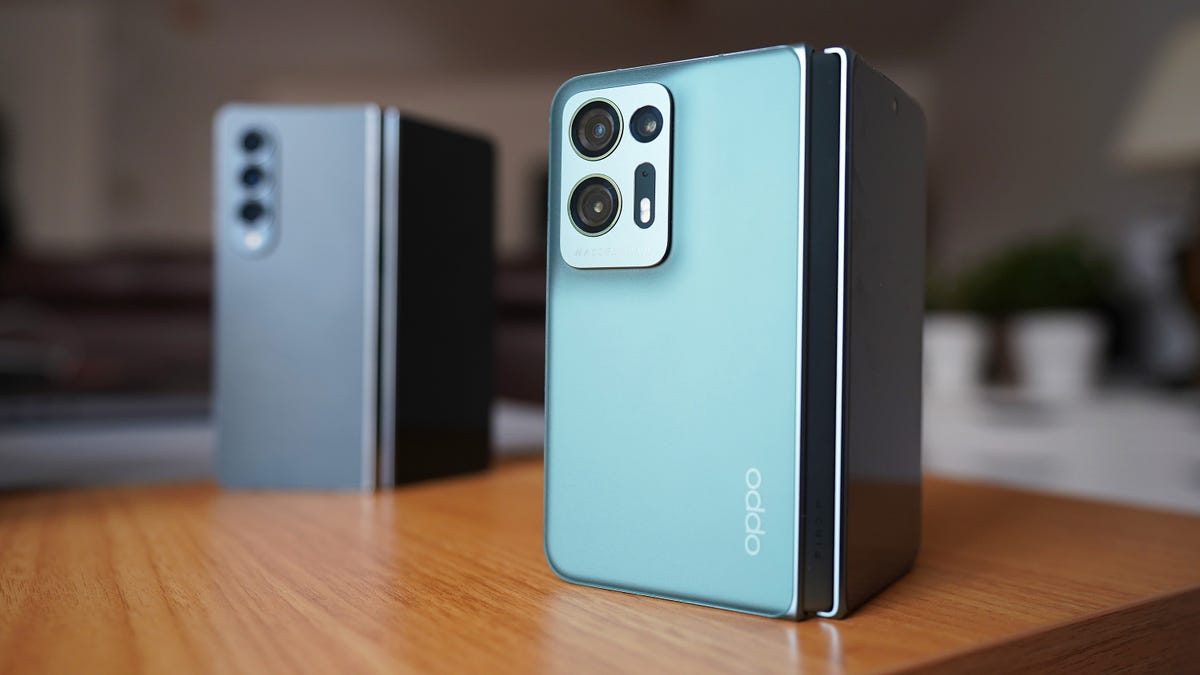Samsung can learn a thing (or three) from Oppo’s latest foldable
When it comes to buying a foldable phone, at least within the US and parts of Europe, your options are limited. Very limited.
A good chunk of the market is dominated by Samsung, whether it’s the company’s latest Z Fold 4 or Z Flip 4, or one of its now-discounted but older models that are just as enticing to upgrade to. Then there are players like Oppo, Xiaomi, and Huawei, all of which are by no means new to the folding display market but may as well be unknown if you don’t live in China.
To fully understand the landscape of foldables, though, it’s always helpful to go hands-on with what every manufacturer has to offer, including Oppo’s recent Find N2.
Also: Is Samsung still the foldable king? The best folding phones right now
In fact, there are three aspects of Oppo’s latest foldable phone that, after testing the handset over the past week, made me really wish Samsung would adopt for its future offerings. Because as the odd adage goes: If there’s anything that pushes innovation, it’s competition, and the US foldable market is in need of that more than ever before.
1. A creaseless display is not impossible
One of the longstanding pain points of Samsung’s shape-shifting devices has been the the crease, that visual dent that runs down the middle of the main display, constantly reminding you of just how fragile foldable glass can be.
While I forgave that display aesthetic on the first generation of the Galaxy Fold because, well, it was a first-generation foldable, Samsung is scheduled to release the fifth generation of its Z Fold later this year — and sadly, I don’t expect anything different.
Also: Here’s what the Galaxy Z Fold 4 crease looks like
It’s especially disappointing because brands like Oppo and Motorola seem to have figured out how to de-crease
a foldable display. The fix is a teardrop bend at the center, which puts significantly less stress on the display when it’s folded together (see image below). Oppo embeds this technology in the Flexion Hinge of the Find N2, and from what I’ve seen and felt, the crease (or lack thereof) is a marginal improvement compared with the Galaxy Z Fold 4.
For now, it seems like the only trade-off with this style of mechanism is the loss of certified water and dust resistance. But Oppo does a plausible job of keeping both halves of the phone completely shut when closed, something Samsung still needs to get right for the Z Fold.
2. Phone-to-tablet foldables don’t have to be big
It’s hard to understate how transformative a phone-to-tablet foldable is, especially to one’s workflow and mobile use cases. But if there’s one thing that I’m not the biggest fan of, it’s how narrow outer displays have become in order to achieve a more squarish, inner unfolded display. As I pointed out in my full review of the Galaxy Z Fold 4 last year, this design makes it feel like a TV remote control when you’re using the outer screen. While that helps with grip, elements on the top of the display are hard to reach with one hand and typing on the keyboard can feel cramped.
I’ll also quote myself for why it makes more sense to have a wider aspect ratio on the front display, the way the Oppo Find N2 does: “Ideally, the outer display should follow the size and aspect ratio of a traditional smartphone. That means wider and shorter dimensions so that apps can be portrayed as developers intended, the UI never feels outstretched, and the keyboard is actually spacious enough to tap on.”
Also: Which Samsung phone is the best? The top Galaxy models compared
The Oppo Find N2, when folded, only has a 5.5-inch display. That’s wider than most phones I’ve tested, but feels excellent to respond to emails and messages with, is pocket-friendly, and can actually be unfolded with one hand (as seen in the GIF below). Even then, the inner display spans 7.1 inches, so you’re not compromising on the tablet aspect of the foldable either.
3. Try the reverse of App Continuity
One feature that I’ve enjoyed using on the Oppo Find N2 is its reverse approach to Samsung’s App Continuity. For starters, much like with the Z Fold 4, when you have an app or browser open on the outer display of the Find N2 and you unfold the device, the content will expand onto the larger inner display.
Oppo takes this a step further by thinking about users who also want the opposite (to shift from the inner display to the outer), allowing you to continue an app with a swipe up after you’ve closed the phone.
Also: Folding phones have an unexpected benefit that might just win you over
I found this subtle feature particularly useful when I’m surfing the web on a subway and want to alternate to the smaller form factor as I move around. I’ve also used it to pick up phone calls and seamlessly switch to a more regular-sized device to hold up to my ear. Now if only Samsung can make its foldables do the same.
For all the latest Technology News Click Here
For the latest news and updates, follow us on Google News.

